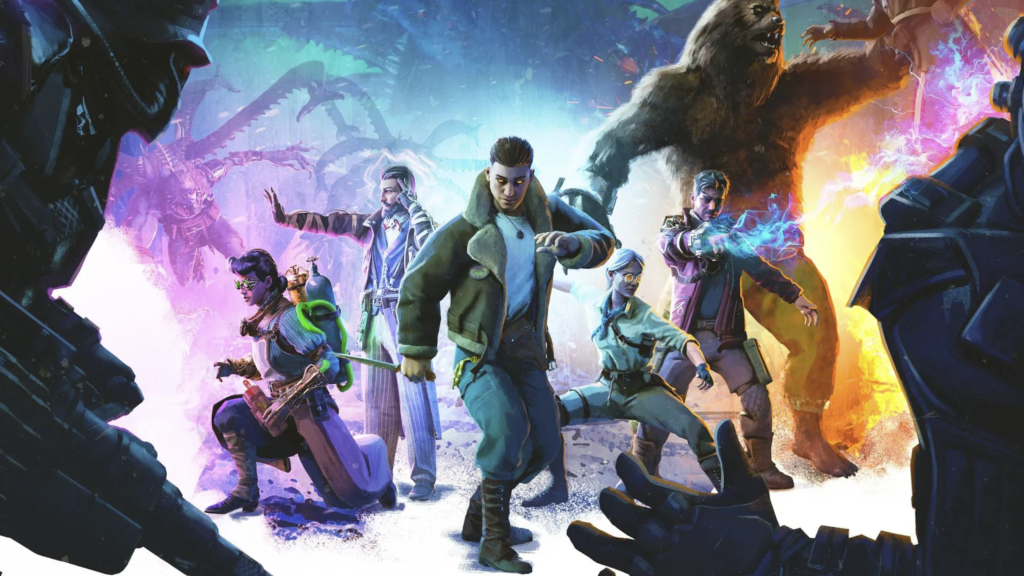
Developers: Artificer, Artificer Games Sp. z o.o.
Platform: Microsoft Windows
Genres: Action game, Adventure game, Strategy video game, Strategy
Initial release date: June 9, 2024
Publisher: Devolver Digital
Engine: Unreal Engine 5
I was a little concerned as I approached Sumerian Six. See, stealth and I don’t really mix. It’s more of a ‘octopus in a china shop’ issue than a ‘bull in a china shop’. I’m not going around smashing stuff. It’s just that whenever I try to do something, it slips out of my grasp and I’m left picking up the pieces, not knowing what I’m doing. I assumed that Sumerian Six and I would not get along. That my men would be killed before they could slit up a single Nazi.
I was mistaken. Sumerian Six startled me in a good way. I believe part of this is due to it reducing its stealth features and focusing on strategy ones. Consider it an extremely violent version of chess. Added to it is a strange – but intriguing – tale with plenty of magical aspects and some lovely locations to explore. The flipside of this chess-like vibe is that things can become a little too casual at times.

This knife kills fascists.
Sumerian Six’s narrative revolves around a resource known as ‘Geistsoff’. If you want to know the direct translation, it’s ‘Spirit Material’. If you aren’t, try Ghost Goo. Regardless, it has the potential for limitless power. A team of scientists experiment with it, and it inevitably goes horribly wrong. One of the scientists, Kammler, chooses to utilize his power for evil and begins developing weapons of mass destruction. Fortunately, Hitler is resisted by the Enigma Squad, a squad of people determined to stop him by eliminating every Nazi in their path.
It’s an intriguing plot, not least because Sumerian Six combines history, specifically World War II, with science fiction. My favorite example of this is the adversary design. We begin with conventional Nazi troopers (and a few fully armored ones), but soon progress to teleporting skeletons and Dr. Octopus-style demon soldiers. A little more interesting than just people with guns. It also permits the plot to become as bizarre as it wants. It begins with ancient Sumeria, of all things, and enormous imprisoned gods. Very strange indeed. I love it.
This is also represented in our characters, as they essentially have superpowers. However, before we get into that, I’d want to introduce them. They’re a varied group. Sid and Isabella, a brother and sister, are introduced first, followed by a German chemist, a doctor who can turn into a ghost, and a man who can transform into a big bear. Each character is individual, which is nice, but I believe they are a little underdeveloped. They primarily communicate in quips or frustrated one-liners. Hell, Sid is revealed to be a descendent of Gilgamesh (don’t ask), and he responds as if he had received an unexpected bill in the mail.

Reichsadler He Conquered
Let’s look at this oddity from a gameplay perspective. On the surface, it appears to be a typical stealth-based game. You begin at one end of a map, with certain tasks to achieve at the other end. The area is littered with opponents, all of which are more powerful than you and will turn you into a walking collander if they notice you. Sumerian Six requires you to navigate vision cones and remove Nazis without setting off any sirens. It’s straightforward at first, but becomes more difficult when you encounter adversaries who can teleport. Alternatively, those who do not tolerate being stabbed.
Sumerian Six shakes everything up with its otherworldly abilities. I’ve already discussed Wojtek, a werebear capable of tearing apart armored adversaries. Isabella, one of the original characters, can become invisible or distract foes. These abilities shift the dial from stealth to strategy for me. When entering a region, I normally anticipate a mix of skills that will get me through. You may even pause time and queue them up. It’s quite pleasant to see a complex approach executed correctly. The stages are structured to make use of all available characters and provide multiple paths through them, which is excellent.
However, some of the skills make things seem a little too easy. Rosa, a German chemist who enjoys caustic chemicals, can eliminate adversaries with her basic melee strike. Siegfried, who appears about the midway of the game, wields a silent, recharged arrow. At that time, success seems nearly inevitable. Furthermore, the AI is quite dense. One thing to note is that vision cones are fairly small. You can simply walk past a decent number of foes. They rarely search outside a narrow radius when an alarm goes off, thus killing someone and waiting out the alarm is a legitimate approach. Yes, it is inexpensive, but it is also really simple to accomplish.

Sumerian Six: Stealth, Simplified
This results in a lack of intensity during games. If you’re looking for a classic stealth game, this may be a turnoff. You don’t have to worry about being noticed. The AI takes short paths, and their vision cones can be seen at any time. There is also a lot of autosaving, which encourages save scumming. As someone who dislikes stealth, this realization increased my enjoyment of Sumerian Six significantly. I stashed my soldiers away in a hiding position at the beginning of each region and spent some time planning out all of the blind spots and the skills I’d use to exploit them.
It’s a weird game throughout. The storyline is undoubtedly unusual. Nazi Germany has been infused with a variety of weird concepts, but old Sumerian mythology is fresh to me. The characters are weird. A spectral doctor and a werebear aren’t our typical characters. The gameplay is also unusual, with stealth components being replaced by supernatural chess. That last one makes things a little too simple, but Sumerian Six is still a truly odd experience.
Review Overview
Gameplay: 78%
Controls: 80%
Aesthetics: 82%
Content: 75%
Accessibility: 85%
Value: 77%
Overall: 79%
GOOD
Summary: “Sumerian Six” is a unique blend of strategy and ancient world-building, providing players with a tactical challenge set in historical surroundings. The gameplay is fascinating, with a focus on strategic decision-making, yet it can feel plodding at times. The controls are fluid and responsive, making it simple to manage complex schemes. The game’s presentation is visually appealing, with complex settings and atmospheric design. While the content is solid, with diverse settings and missions, it may not provide enough diversity for fans looking for frequent new challenges. Overall, this is a good game that encourages patience and strategic thinking.

